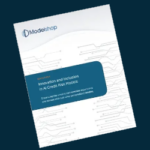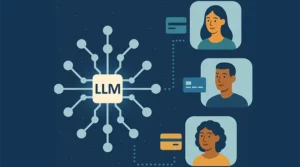I had the privilege of working with a brilliant team of data scientists and engineers who put a big dent in credit card fraud in the early 90s. The product was called Falcon and it was a very effective early application of what we’re now calling artificial intelligence (AI). Using a combination of neural network predictive models, real-time profiling, business rules and real-time decision strategies, that small team was able to cut credit cards fraud rates in half in a few years. Falcon was groundbreaking in its use of neural networks, but an arguably more critical feature was the real-time technology that allowed it to make fraud/not-fraud decisions in the few millisecond window available while you paid your dinner tab.
Flash forward 30 years. Given our early success preventing fraud with AI I would think we would have eliminated financial crime by now, but that clearly has not happened. Industry experts (and marketers) will tell you that the criminals are just getting smarter and that it’s a never-ending technological arms race. There’s some truth to that, but that’s not the root cause for our slow progress. Our current anti-fraud solutions are plugging the obvious holes, successfully thwarting the dumb criminals, but not presenting much of a deterrence for more sophisticated ones. Unlike depictions in the movies, it doesn’t take a black-hat hacker to successfully commit fraud today. In 2020, an estimated $42B1 was lost to fraud. These losses have become so normalized that budgets simply account for it as operating expenses, and the cost is passed on to the consumer.
After 30 years of fighting crime with AI technology, why haven’t we made more progress? Every year we see a slew of new anti-fraud solution providers with creative new techniques to identify fraudsters. Meanwhile, financial services companies continue to struggle to get a handle on their losses. What’s really going on here?
Every organization’s fraud problem is unique
Financial services companies and fraud technology companies are approaching the fraud problem with the wrong mindset. The reason preventing crime is so hard is because every financial relationship is unique. There is no off-the-shelf anti-fraud platform or tool that can fully understand the relationship a financial services company has with their customers or the actions they have available to them to prevent crime.
For example, a large top-tier bank is likely to experience very different fraud attack patterns than a mid-sized credit union, and they each have different tools available to combat that fraud. The large bank will rely on the sheer volume of their client relationships to finely tune behavioral models that can detect outlier patterns quickly. They are also more likely to implement technologies like automated text confirmations and machine learning to handle the sheer volume of alerts coming from their models and from risk scoring vendors. A credit union, on the other hand, will leverage the depth of their member relationships to better identify high risk behavior and they will take a more personalized high-touch approach to treating alerts that better aligns with their member centric culture. These organizations are different enough that they need different tools and strategies to effectively manage their unique fraud risks.
Why generalized fraud platforms aren’t the solution
One could argue that anti-fraud vendors could create multiple solutions, each tailored to a specific segment of the market, for example, one for big banks, and one for credit unions. There are a few problems with this approach. First, it’s not economically viable for a software company to target just one market niche. In addition to multiple banking tiers, there are many additional dimensions to fraud, including payment, merchant, deposit, lending and electronic transfer fraud. There would have to be dozens of flavors of these platforms, each requiring a significant software development and go-to-market investment that would make it difficult for these vendors to be profitable.
Instead, a few dominant anti-crime platform vendors have created products that are ‘configurable’ to handle the nuances of each business or type of fraud. The problem with the large fraud platforms is that they really aren’t configurable enough, and every implementation turns into a large, costly customization project that leave the customer making compromises on their requirements and with a solution that is hard to modify once deployed. The result is a general disillusionment regarding the effectiveness of anti-fraud technology and a continual stream of new vendors trying to fill an unmet need.
Combating fraud is a dynamic process
The other problem with off-the-shelf anti-fraud platforms is that crime attack vectors aren’t static. The fraud fighting team at any financial institution is operating in a dynamic environment where new fraud patterns emerge and compensating strategies are deployed on a continuous basis. A commercial anti-fraud solution can’t anticipate these patterns ahead of time nor provide responsive counter-measures fast enough to prevent losses. Despite claims, these platforms simply aren’t flexible enough to add new predictive data sources and create entirely new anti-fraud strategies on the fly.
I will use the analogy of your finance department. Every day, your finance team is dealing with new business requirements to work with operational data, do analysis and make financial decisions – creating new financial models in spreadsheets daily or weekly. Your fraud department needs to work in a similar way – constantly working with new data, creating new strategies and executing crime counter measures in real-time. It would be hard to imagine a 3rd party vendor coming in with a ‘finance’ platform, customizing it once for a hefty consulting fee, then leaving the solution to run your finance department. A much more dynamic and agile solution is needed for finance, and the same is true for anti-fraud shops.
As a result, the industry has produced a lot of point solutions, risk scores and device monitoring technologies that each add value, but which are not assembled into effective anti-fraud solutions tailored for any company or financial product. The ultimate solution is left up to internal IT teams or one of the generalized anti-fraud platform vendors who promise flexibility and customization that they’re not able to deliver. Assembling all of these tools and technologies into an effective anti-crime solution is difficult for even the most advanced IT teams. It is almost impossible for small to mid-sized financial organizations. The emergence of a new class of technologies is starting to change that.
No code AI platforms offer an alternative
The emergence of no code AI platforms is beginning impact multiple industries. No code AI provides the technologies required to create custom intelligent applications like fraud prevention in one integrated platform that can be deployed without requiring software development. Think of no code AI as a tool for fraud analysts that is similar to a spreadsheet for a financial analyst. Using a no code platform, fraud teams can assemble risk signals from multiple vendors, combine them with customer data, create profiles, scorecards and predictive analytics, automatically create and prioritize fraud alerts, drive automated counter-measures and create fraud analyst workbenches – all in one tool, without requiring code or custom implementation services. Depending on the complexity of an organizations anti-crime policies, a solution like this can be created with no code AI tools in weeks.
Allowing teams to build maintain their own custom anti-crime platforms really changes the game. Instead of long, expensive vendor implementations that become stale quickly, teams are now able to implement custom fraud prevention strategies and continually evolve them as attack patterns change. As new data or technologies emerge in the market that improve the efficiency of fraud counter-measures, they can be incorporated into custom fraud strategies in days or hours, without waiting for third-party vendor software releases or expensive consulting projects.
The emergence of a new class of fraud fighters
Using no code AI, even very small organizations who have minimal IT staff can work with fraud consulting companies to implement highly customized anti-fraud solutions at a very low cost. These boutique consulting companies are highly specialized, bringing unique insight into a particular class of fraud. They now have an opportunity to deliver more value to their clients using no code AI tools that are more effective and cost a fraction of implementing a big platform vendor solution.
No code AI has the potential to transform many industries, but one of the areas I’m most excited about is fraud prevention. Having been around the fraud problem for almost three decades, it frustrates me to see organizations continue to struggle with this problem and to see how ineffective and expensive many of the vendor solutions are after working on them for so many years. It’s not the vendor’s fault. Like running a finance department, running a fraud shop is by its nature a ‘self-serve’ operation that needs flexible and agile tools to be effective. No code AI provides a transformational opportunity for financial services organizations to finally begin to win the war on fraud.
1 PwC’s Global Economic Crime and Fraud Survey 2020
About the author
Tom Tobin is the founder and CEO of Modelshop, a no code AI automation platform. Prior to founding Modelshop, Tom has spent 30 years building automated AI solutions in the financial services industry including leading the financial crime software division of Fiserv.






